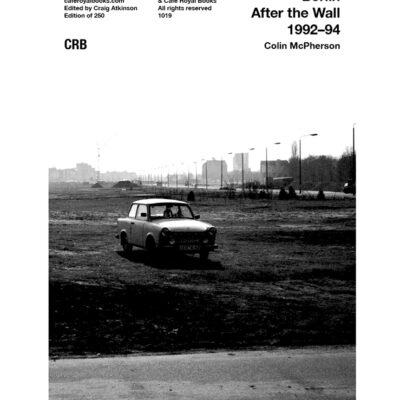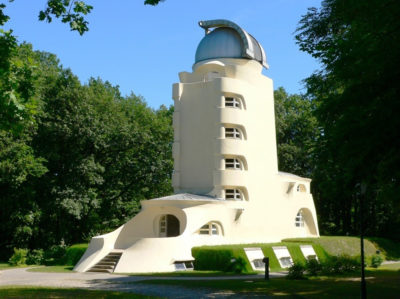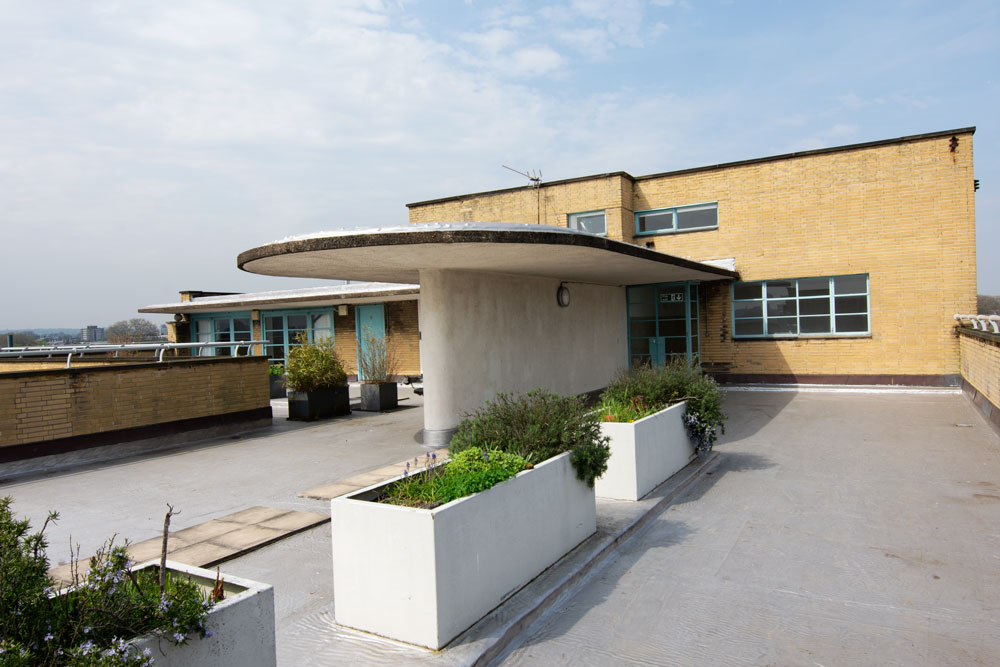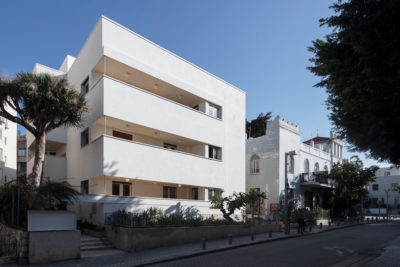Ballinhaus: Call it by its name
This will be familiar; we see a striking building and curiosity ignites – who built it, for whom and when? This particular journey of discovery began when we discovered a series of photos of Hamburg’s Kontorhaus district, Sprinkenhof, Meßberghof, Chilehaus. It ended with more questions than answers about how we treat difficult history.
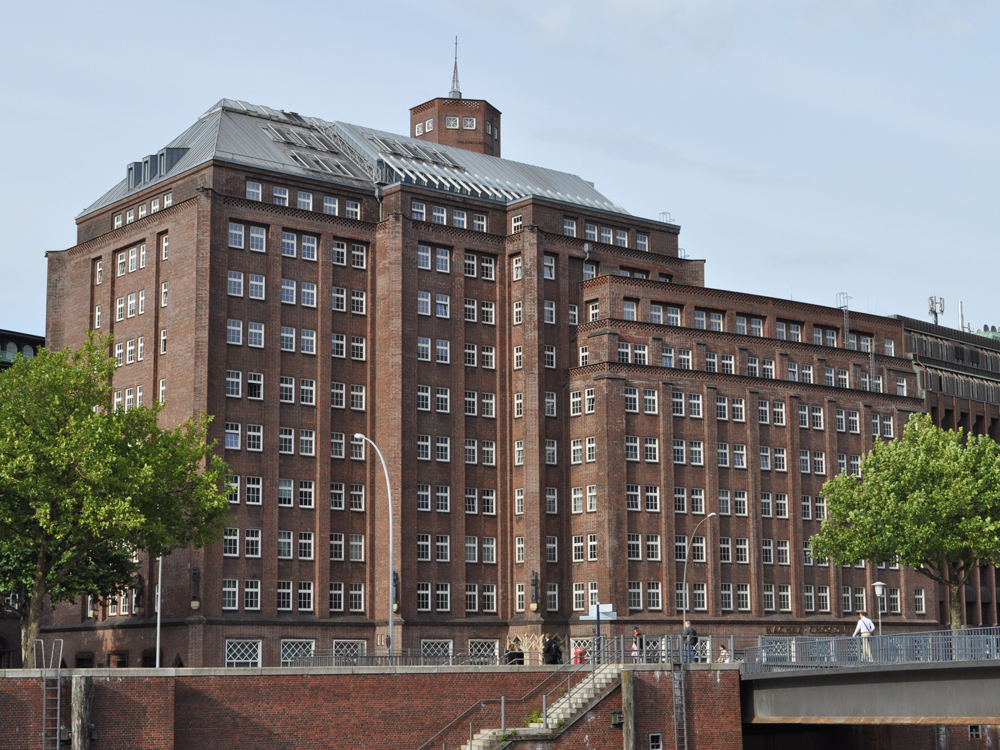
A casual google threw up the name of the three architects who worked on the project, Fritz Höger was familiar, known for Brick Expressionism and later for his enthusiastic adoption of National Socialism, but the Gerson brothers drew a blank.
Today Kontorhas has UNESCO world heritage protected status. Developed in the early 20th Century under the guiding hand of City Planner Fritz Schumacher, it was designed together with Gangeviertel in response to a cholera epidemic that was overwhelming the huge dock area of the Free and Hanseatic City of Hamburg, to give the city its full title. The old was knocked down to make way for a new commercial district. Chilehaus, Ballinhaus and Sprinklehof were ‘anchor buildings’ in a project begun in 1927 and completed in the mid-’50s
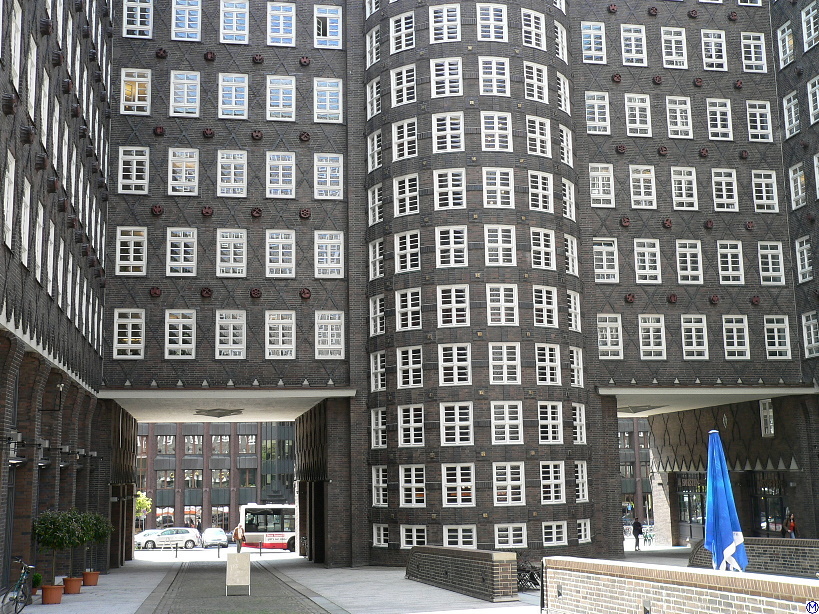
Sprinkenhof, image Wmeinhart CC BY SA 3.0
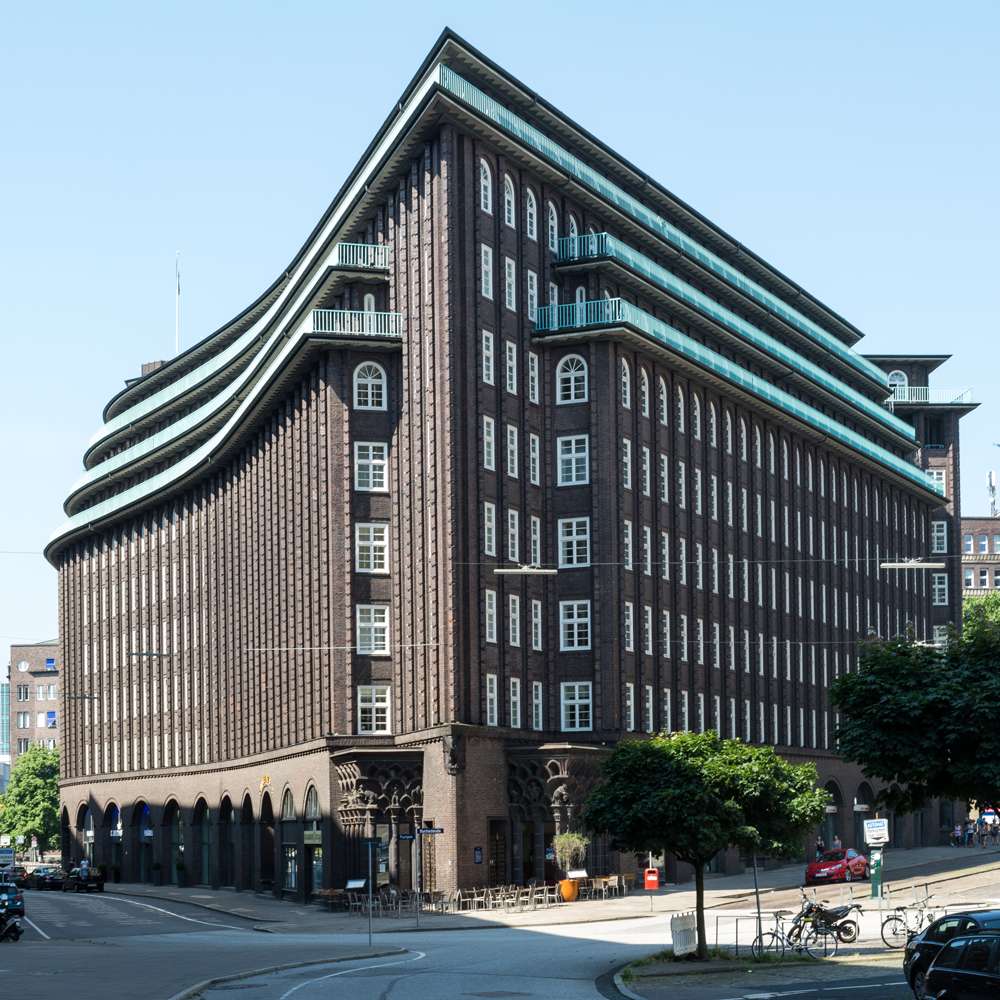
Chilehaus Image Ajepbah CC BY SA 3.0 DE
Discovering the history of the district is not too difficult, however, the devil is in the detail. That’s where artist Marika Reis comes into the story. Armed with a pencil she’s reminding everyone of the history of the Kontorhaus district and the choices made before, during and after WWII. And the detail really is devilish. Marika and I made contact by chance, I was so struck by her arresting images and their message, that a conversation developed about memory and remembrance which culminated in this article.
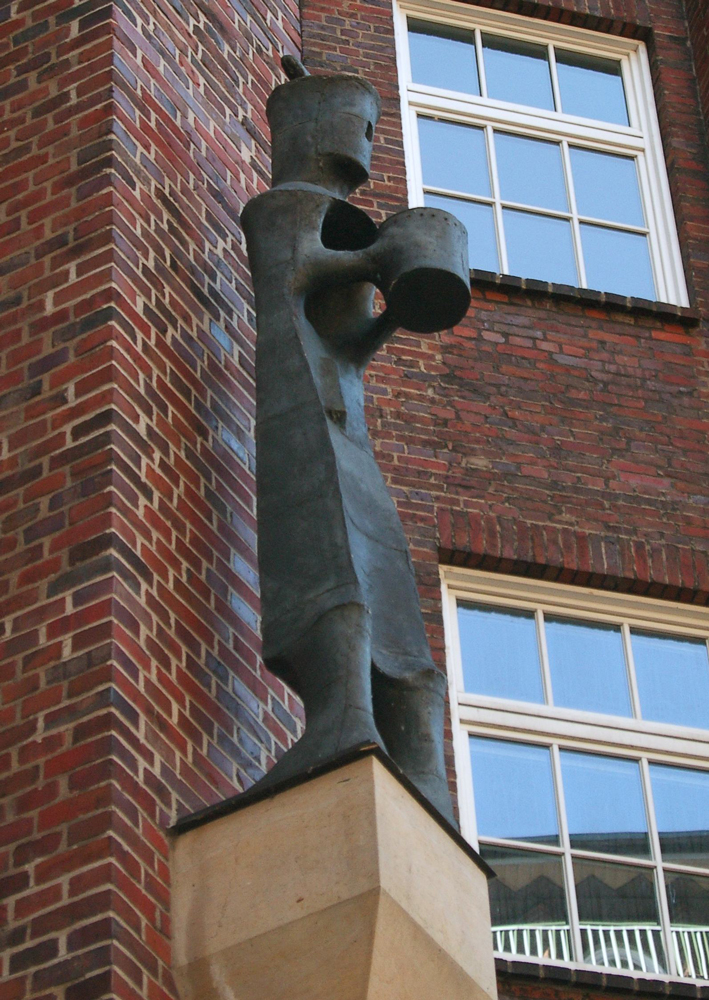
Lothar Fischer 1997 sculpture CC BY SA 3.0 image Staro1
Much, but not all of Kontorhaus was designed by Fritz Höger, Oskar and Hans Gerson (Gebr Gerson). But the trio were not able to see the project through together. Oskar, born in Magdeburg Saxony Anhalt, was to become a victim of racial persecution, removed from the project in 1933 as Jewish architects lost their licences to practice and were no longer allowed to work on public buildings. Hans had died two years earlier of natural causes. Oskar left Germany in 1939 saving his own and his family’s life in the process.
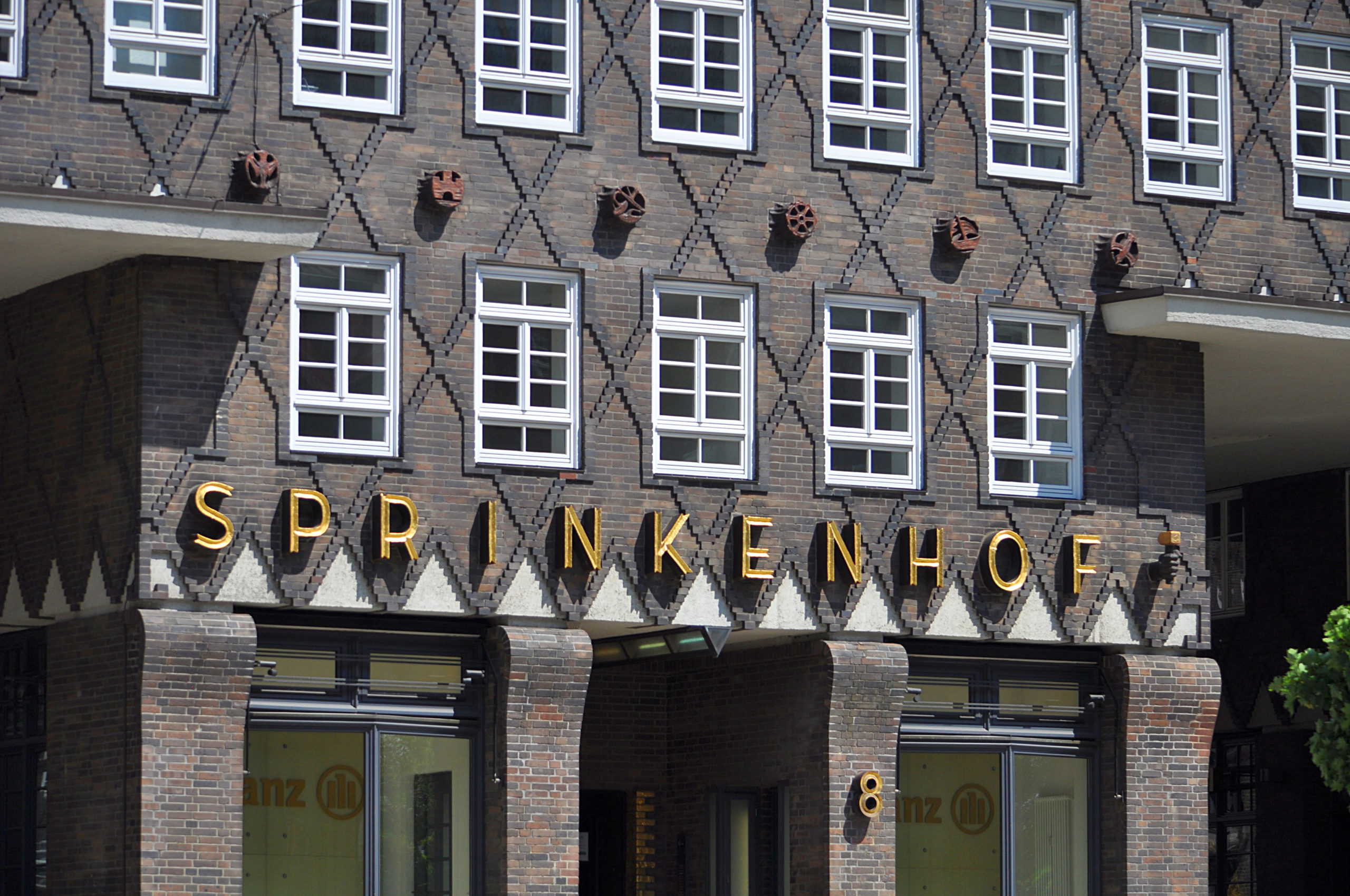
Sprinkenhof, Höger & Gerson Bros, image Agepbah CC BY SA 3.0
Fritz Höger enthusiastically embraced Naziism and fawned on the regime in the hope of advancement, something he believed made easier by the elimination of competitors, even someone with whom he had worked. He was just fine and carried on with the project regardless. Yet Höger’s hope of becoming Hitler’s state architect was dashed; it turned out Hitler wasn’t keen on masonry – more of a lover of the neo-classical and a fan of one of the nastiest and most calculating Nazis, Albert Speer. The project halted with the Allied blanket and deadly bombing of Hamburg and other key cities in ‘Operation Gomorrah’ in 1943.
Ballinhaus, which became the focus of attention for Marika and I, was named for Alfred Ballin who had died in 1918. He was a famous son of Hamburg, a German patriot, credited with creating modern cruising. Ballin was the man who found a way to transport millions of emigrants to a new life in the USA on HAPAG, the Hamburg Amerika Line.
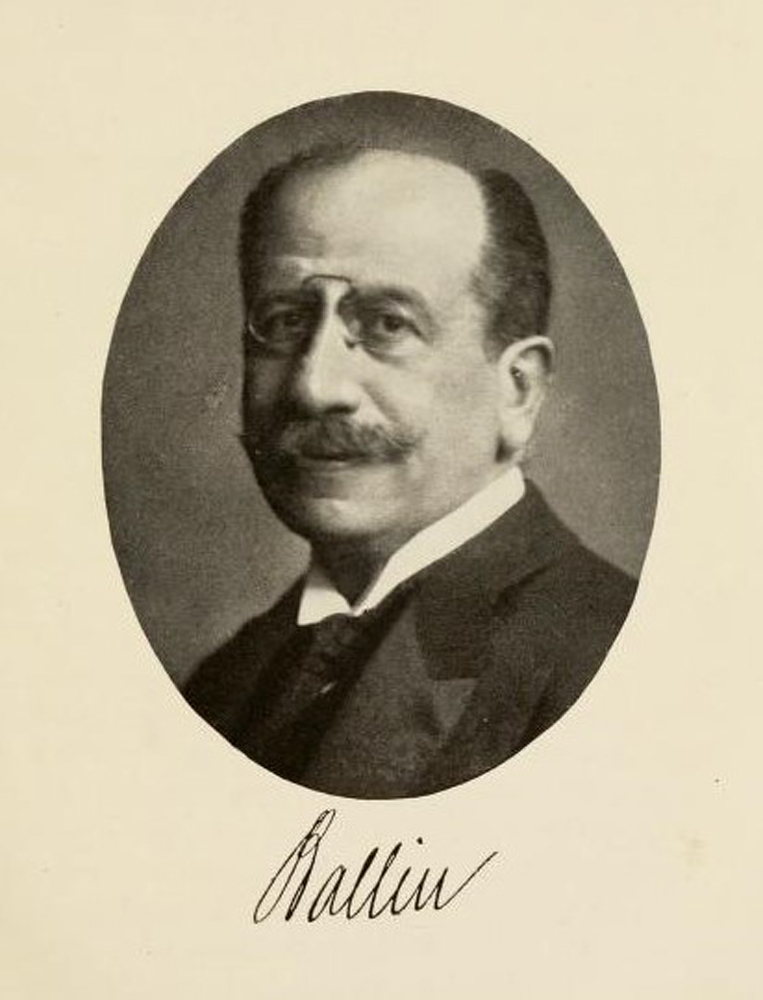
Albert Ballin 1913
It’s strange to think that it is not by any means impossible that Oskar Gerson, (long before he imagined he would have to flee Germany), may well have crossed paths with one of the new tenants in the Ballinhaus building, Dr Bruno Tesch of Tesch & Stabenow, a firm that pre-war had specialised in pest control. Later the reason for the company’s expansion would become synonymous with something quite different and it is how today that history is being remembered that troubles Marika.
Aryanisation of buildings, getting rid of Jews, Jewish businesses, any Jewish connection and, of course, stealing their value, was state organised theft on a nationwide scale and the Kontorhaus buildings were subject to this process. After 1933, longstanding tenants were compelled into selling their companies for pitiful prices in order to aryanise the Kontorhaus buildings. It’s a sobering account of the start of an increasingly cruel bureaucracy enforcing, without qualm, a sadistic ideology about a fake conspiracy theory. We know where it led and Ballinhaus and Tesch & Stabenow were part of the centre of these monstrous crimes. While not an account from Hamburg, here is an interview with a real estate broker in Aachen that explains aryanisation of someone’s property in detail. Loss of livelihood, loss of businesses, loss of human rights and ultimately loss of life. While these crimes pale into insignificance by what came later that is only because those later crimes were brutally murderous on a scale never seen before or since. Tesch & Stabenow, a devotedly Nazi enterprise and exceedingly greedy, became the beneficiary of those empty offices in the Ballinhaus, expanding as its activities grew.
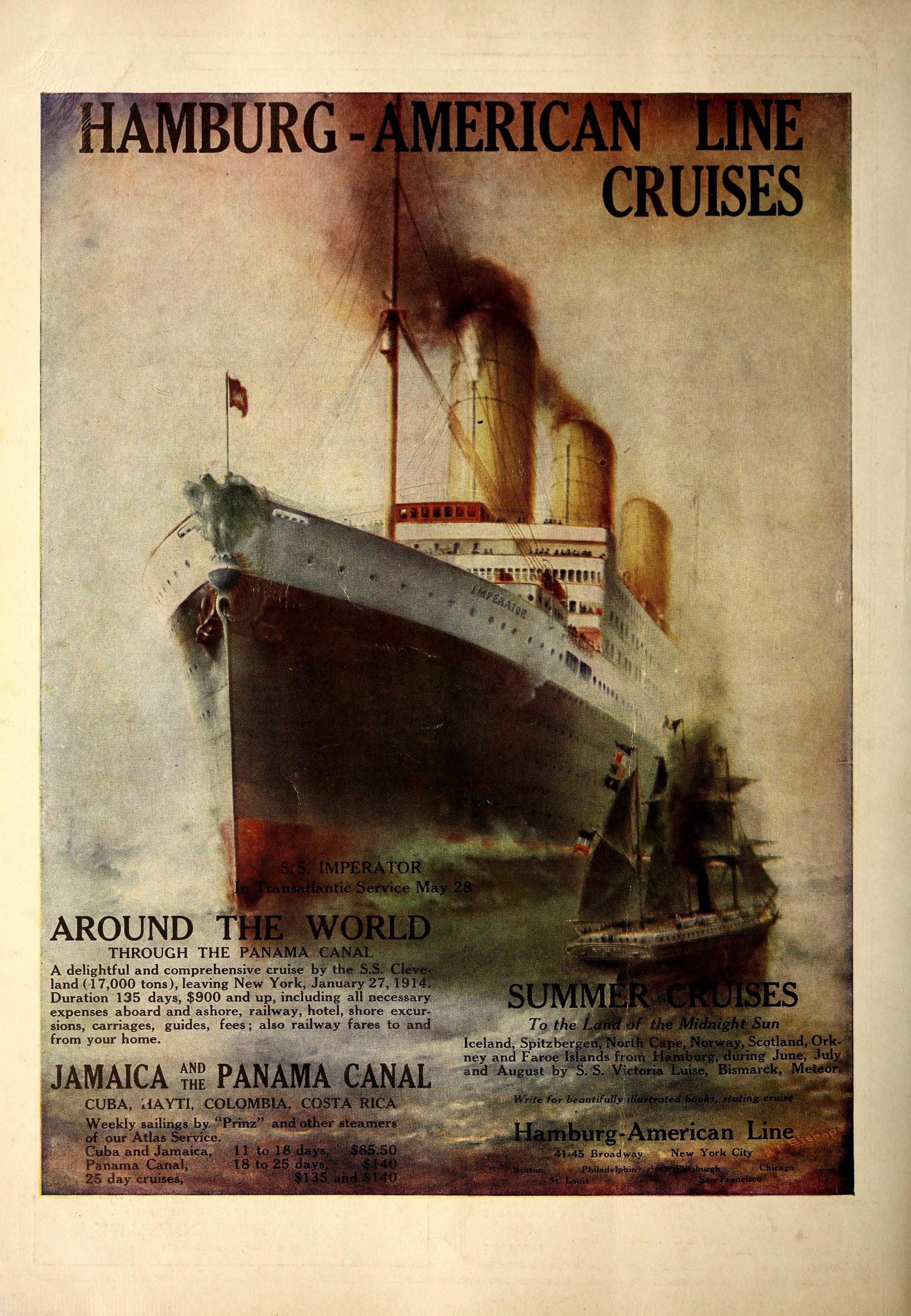
Erasing history went further; Alfred Ballin became a non-person, he was an awkward reminder of the Jewish contribution to Hamburg. The ocean-going liner SS Albert Ballin was renamed the Hansa in 1935 and in 1938 the Kontorhaus district’s Ballinhaus building became a victim of Reich Governor Karl Kaufmann’s decree ‘that all streets and buildings called after Jews must be given new names.’ Ballinhaus was renamed Meßberghof.
Dr Bruno Tesch’s firm Tesch & Stabenow became a key contributor in genocide. They were the major distributor of Zyklon B to the German authorities, the poison gas used in extermination and concentration camps along with gas and gassing equipment. After the war, Tesch, Karl Weinbacher with Joachim Drosihn, (the firm’s first gassing technician) were tried and found guilty in the Nuremberg trials and Tesch was hanged a year later. Ballinhaus, built so optimistically no more than a decade earlier had become a house of horrors.
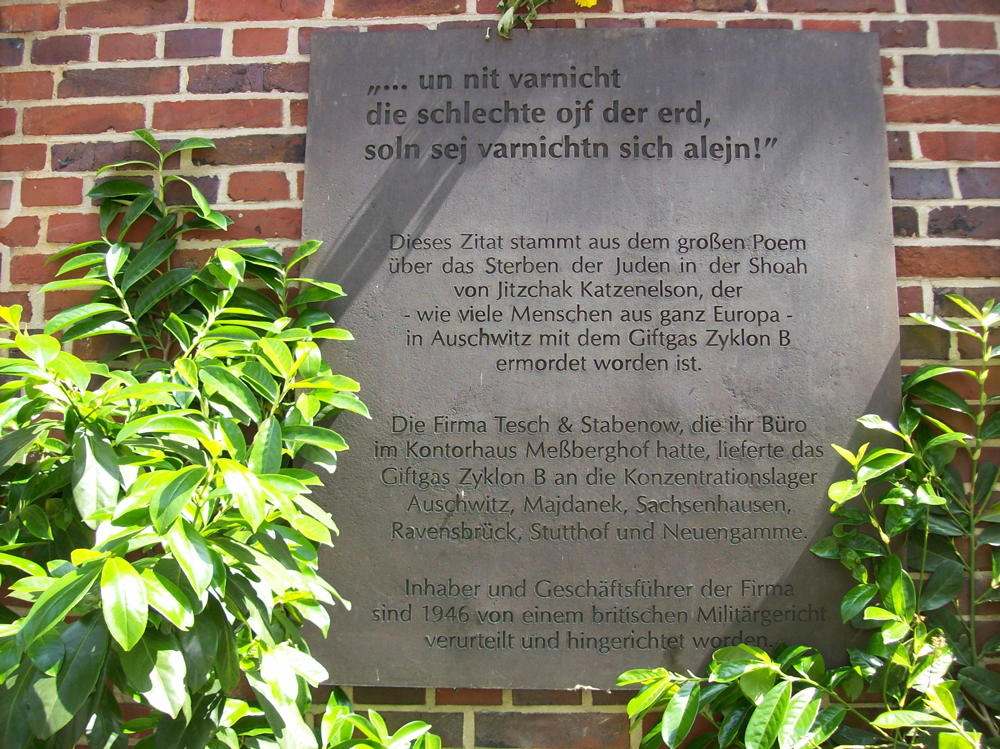
Memorial Mesberghof zyclon B Hamburg Image Pauli Pirat CC BY SA 4.0
Marika Reis, is a native of Mainz who now lives in Hamburg. She discovered the history of the building by chance. She worked locally and was frankly bemused when she discovered the name change from Ballinhaus to the Nazi-inspired Meßberghof had and has not been addressed. It seems she was not alone in thinking this;
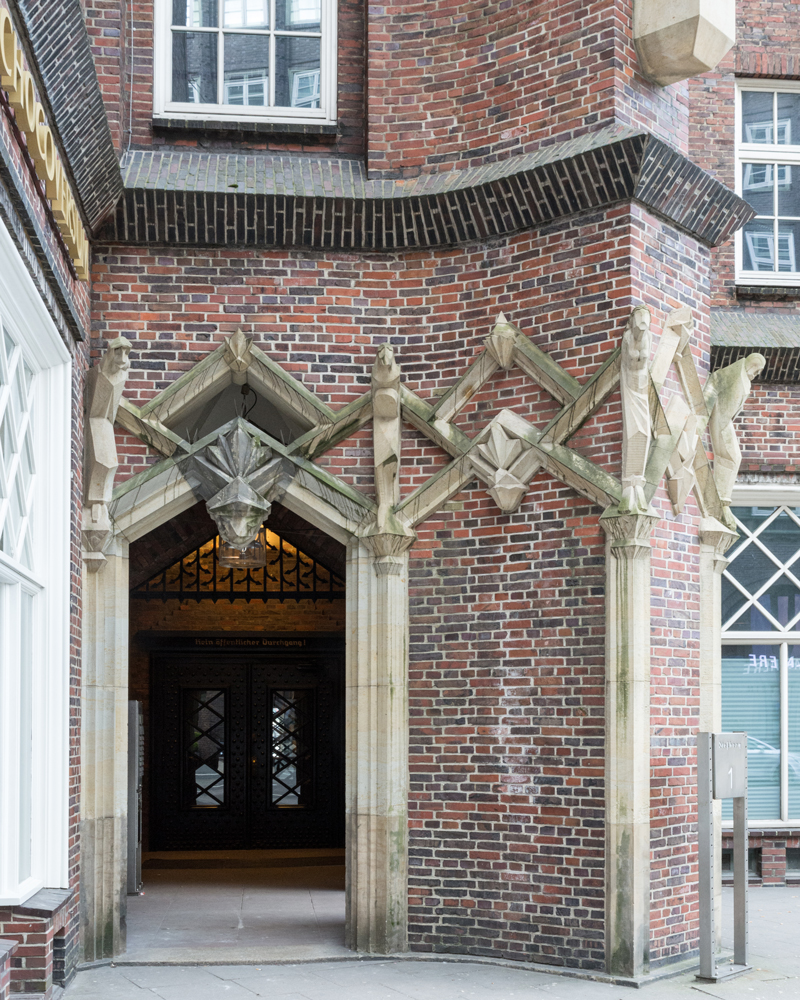
Meßberghof, image Ajepbah CC BY SA 3.0
According to a 2017 article in the Smithsonian Magazine:
‘All through the early 1990s, local history preservation activists fought the German Real Estate Investment Co., which managed the building and worried that the footnote to its historical burden would scare away potential renters. The administrators vehemently opposed the design [of a memorial] with an image of a Zyklon B container. Too reminiscent of Warhol’s Campbell Soup can, they sanctimoniously pronounced, appearing to sidestep probing questions about historical memory. The building’s owner, Deutsche Bank, weighed in. “Your suggestion to picture the Zyklon B container on a plaque,” its senior vice president Siegfried Guterman responded to the activists in the spring of 1996, “has something macabre about it.” What if, he feared, it “elevate[s] the thing to the status of an art object”? The activists’ bitter quip that nothing could be more macabre than the Holocaust fell on deaf ears, as did the plea to restore the original name, Ballinhaus’.
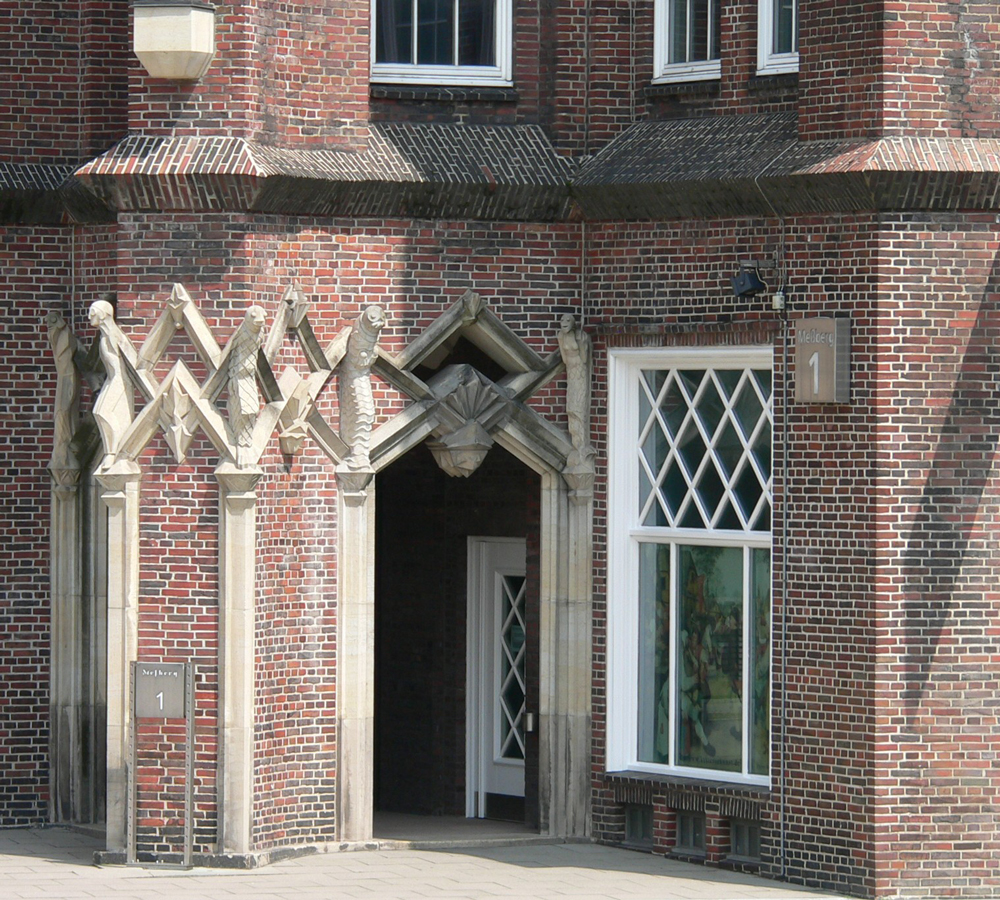
Meßberghof Image Wolfgang Meinhart, Hamburg, CC BY-SA 3.0
Like many people, it’s the absence of something that should be there, the avoidance of facing something important that triggers activism and a reaction. Marika shares that while today there are signs that remind visitors to ‘Ballinhaus’ of the history, they are so small and understated that they are an injustice to the memory of those that suffered and to the contribution of the Gerson brothers. She notes that in effect it’s a luck-of-the-draw if you see them or not when visiting Meßberghof as the building is huge. If something is not mentioned or not noted properly it is in danger of being wiped from history. I asked her what she would like to see happen and she felt,
‘It’s incumbent on the city to continue to teach, remind and remember and one simple step would be to return the building to its pre-war name because there was no logical excuse not to’.
Her discovery ‘by chance’ is what prompted her to contribute to that continuing education using the pre-war sculptures of Ludwig Kunstmann and 1997 additions by Lothar Fischer to convey her thoughts.
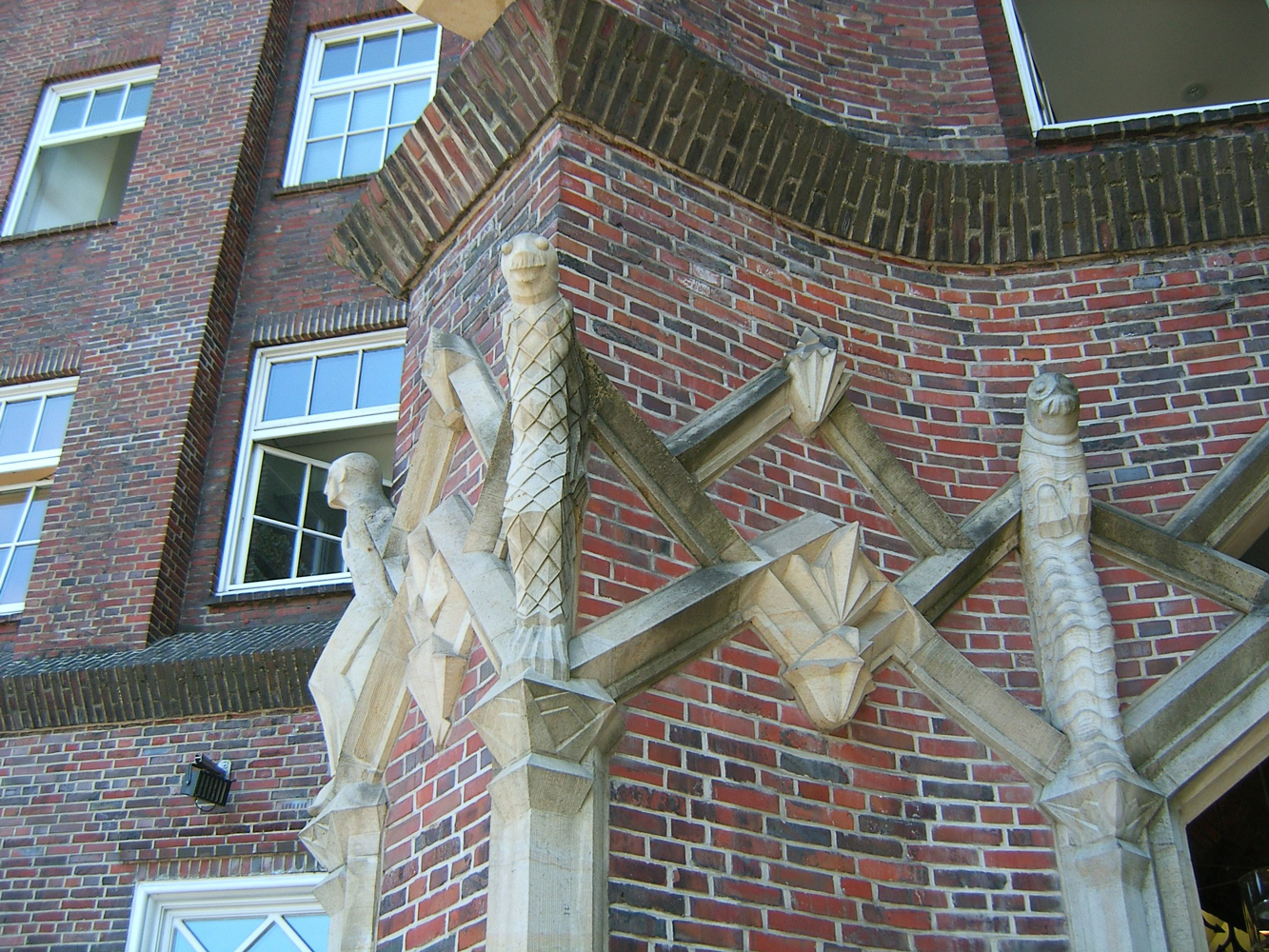
Meßberghof sculptures by Ludwig Kuntsmann Hamburg image Ajepbah CC BY SA 3.0
In Marika’s case, she understood what she saw as she got to know the nooks and crannies of the buildings, the inner courtyards of the district where she encountered those very discreet and discrete Meßberghof memorial plaques noting the activities of Tesch & Stabenow.
Art is a form of activism and Marika made clear her thoughts, a selection of which we share with you here with English translations.
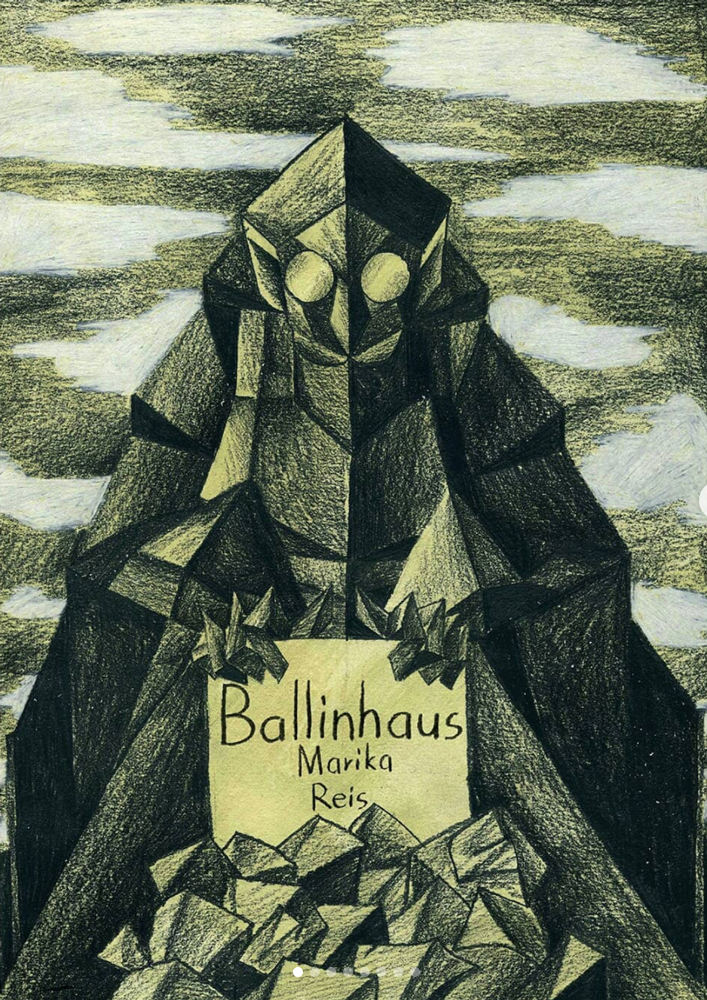
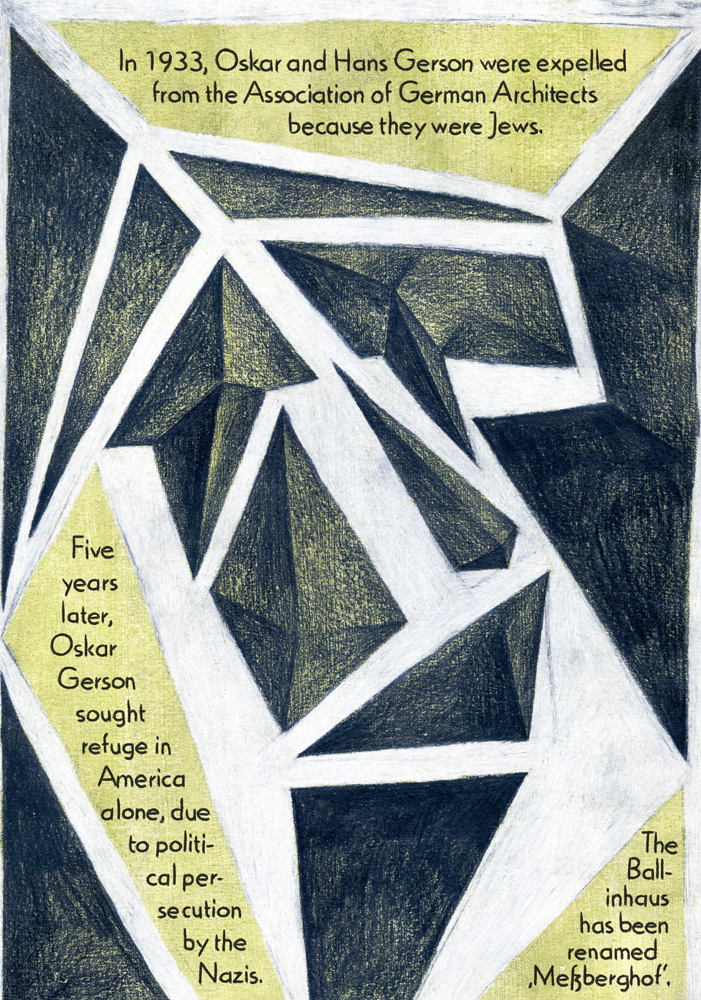
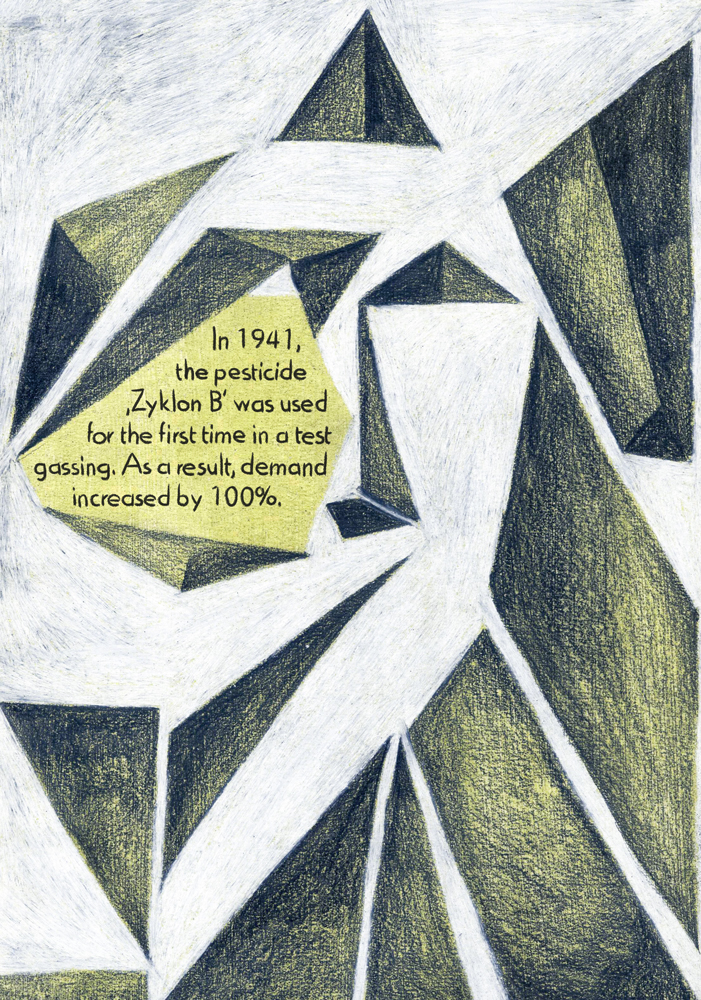
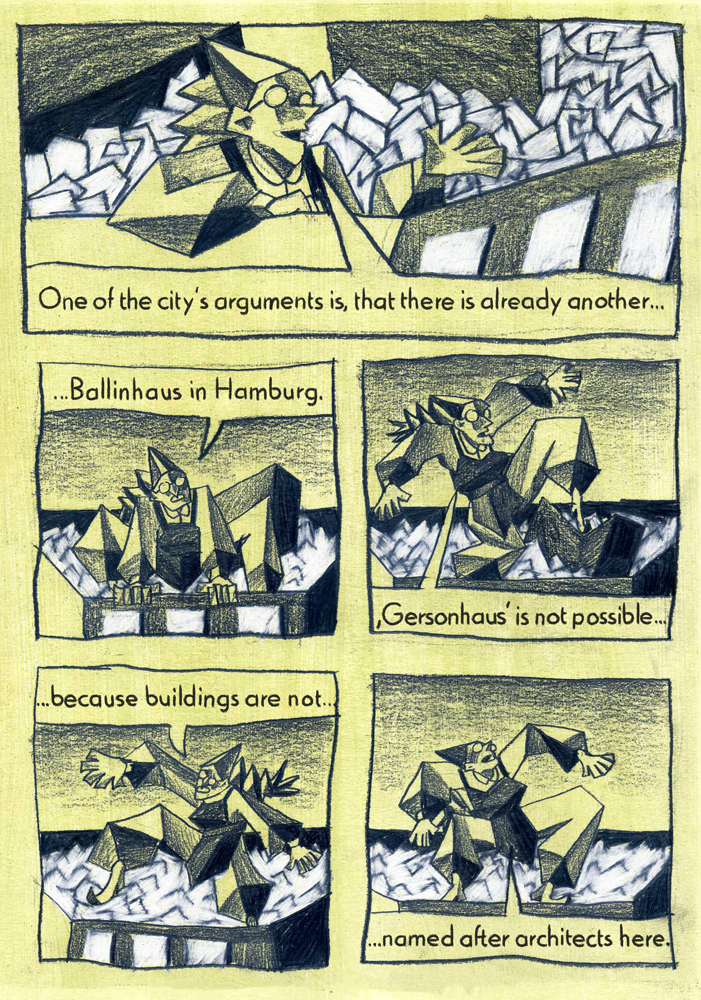
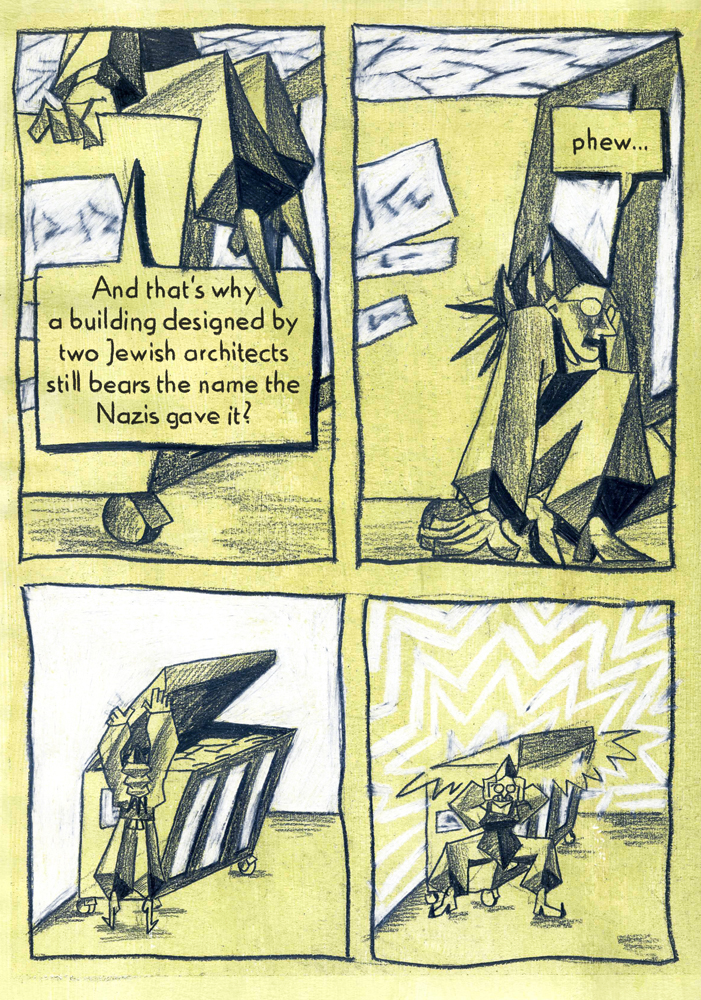
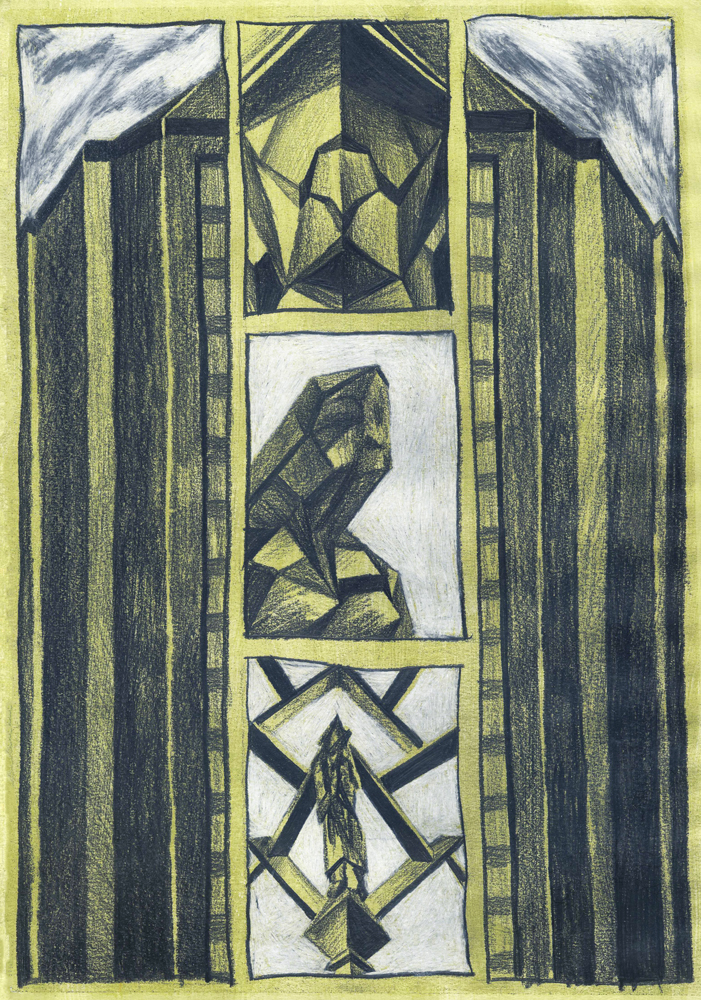
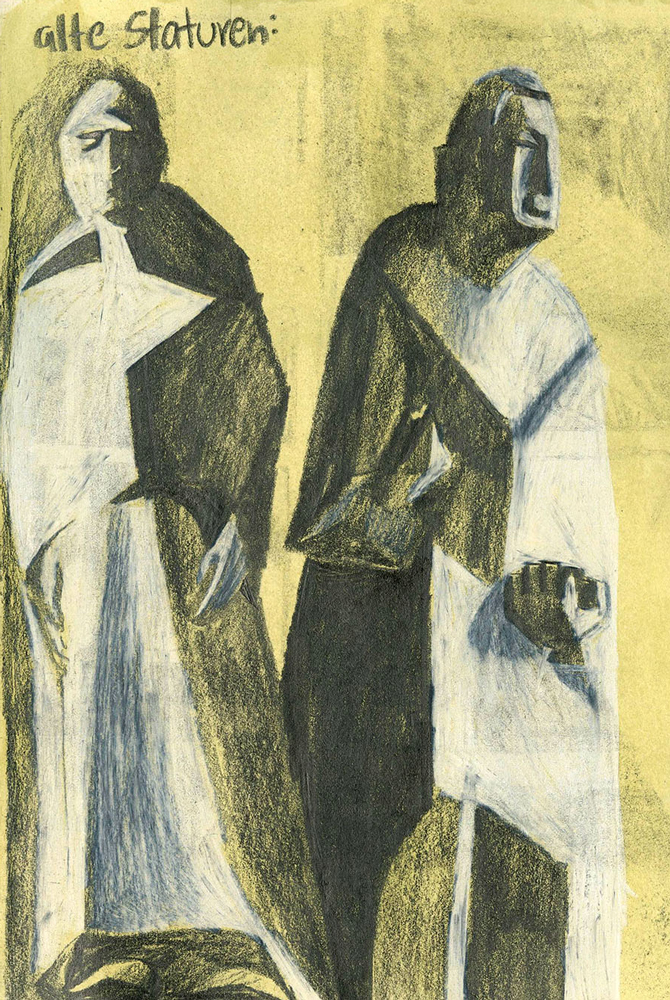
All artwork is the copyright of Marika Reis © Find Marika on Instagram




